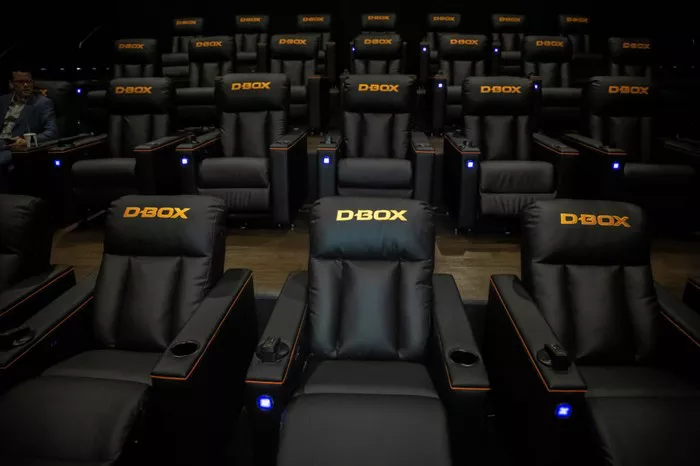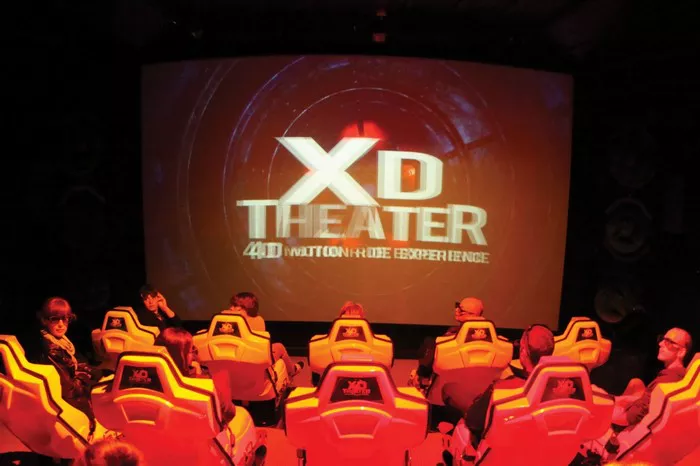In the ever-evolving landscape of cinema, technological advancements continually push the boundaries of audience engagement. Among these innovations, D-Box stands out as a pioneering force, revolutionizing the movie-watching experience. From its inception to its integration into theaters worldwide, D-Box has reshaped how audiences perceive and interact with films. This article delves into the intricacies of D-Box technology, its impact on the movie industry, and its implications for the future of cinematic entertainment.
Origins and Evolution
D-Box traces its roots back to the early 2000s when a team of engineers and visionaries embarked on a quest to enhance the cinematic journey. Founded by Claude Mc Master in 1996, D-Box Technologies Inc. aimed to bridge the gap between on-screen action and audience immersion. The initial concept centered on synchronized motion technology, where seats would move in tandem with the on-screen events, creating a multisensory experience.
Over the years, D-Box refined its technology, incorporating feedback from both filmmakers and audiences. The result was a sophisticated system capable of subtle, nuanced movements that complemented the narrative arc of each film. By 2009, D-Box had made its debut in theaters, marking the beginning of a new era in cinematic immersion.
How D-Box Works
At the heart of D-Box technology lies a complex network of sensors, actuators, and software algorithms. Each theater seat is equipped with these components, allowing for precise and synchronized movements. The motion data is meticulously choreographed to match the on-screen action, enhancing the viewer’s sense of realism and engagement.
The D-Box experience begins long before the audience takes their seats. Filmmakers work closely with D-Box engineers to encode motion metadata directly into the film’s soundtrack. This metadata serves as a blueprint for the synchronized movements, ensuring seamless integration with the narrative flow.
During playback, D-Box-enabled seats come to life, translating the encoded motion data into a dynamic physical experience. From gentle sways to adrenaline-pumping jolts, the range of motion is tailored to suit each film’s genre and pacing. Whether soaring through the skies in a high-octane aerial chase or navigating the depths of an underwater adventure, viewers are fully immersed in the on-screen world.
Impact on Audience Engagement
The introduction of D-Box has had a profound impact on audience engagement, transforming passive viewers into active participants. By bridging the gap between the physical and virtual realms, D-Box invites audiences to feel, rather than just see, the story unfold. This heightened sensory experience fosters a deeper emotional connection with the characters and plot, leading to a more memorable and immersive viewing experience.
Moreover, D-Box has proven to be a powerful tool for attracting audiences back to the theater. In an age dominated by streaming services and home entertainment systems, cinemas face increasing pressure to offer unique and compelling experiences. D-Box provides a distinct advantage, offering an experience that cannot be replicated outside the theater walls.
Industry Adoption and Expansion
Since its debut, D-Box has garnered widespread acclaim from both audiences and industry insiders. Major theater chains have embraced the technology, incorporating D-Box seats into their auditoriums to meet growing demand. Today, D-Box can be found in theaters across the globe, from bustling metropolises to remote corners of the world.
Furthermore, D-Box has expanded beyond traditional cinema settings, finding applications in other entertainment venues such as theme parks, museums, and even virtual reality experiences. Its versatility and adaptability make it a valuable asset in a variety of immersive entertainment formats.
Challenges and Opportunities
While D-Box has enjoyed considerable success, it is not without its challenges. One of the primary obstacles is the need for widespread adoption among filmmakers. While an increasing number of studios are embracing D-Box technology, some remain hesitant to invest in the additional resources required for motion encoding.
Additionally, there is the ongoing challenge of maintaining relevancy in a rapidly evolving technological landscape. As new innovations emerge, D-Box must continue to innovate and differentiate itself to remain competitive.
However, with these challenges come opportunities for growth and expansion. As audiences crave increasingly immersive experiences, D-Box is well-positioned to capitalize on this demand. By forging partnerships with filmmakers, expanding into new markets, and leveraging emerging technologies, D-Box can continue to shape the future of entertainment.
The Future of Cinematic Immersion
As we look to the future, the potential of D-Box technology is limitless. With advancements in virtual reality, augmented reality, and haptic feedback, the lines between reality and fiction continue to blur. D-Box stands at the forefront of this convergence, offering audiences a glimpse into a world where the boundaries of imagination are boundless.
In the coming years, we can expect to see D-Box technology integrated into a wide range of entertainment experiences, from interactive gaming to live events. As filmmakers explore new storytelling techniques and narrative formats, D-Box will play an increasingly integral role in bringing these visions to life.
Conclusion
D-Box represents a paradigm shift in the way we experience cinema. By seamlessly blending technology with storytelling, it has redefined what it means to be truly immersed in a film. As audiences continue to seek out new and exciting experiences, D-Box stands poised to lead the charge into a bold new era of cinematic entertainment.
























